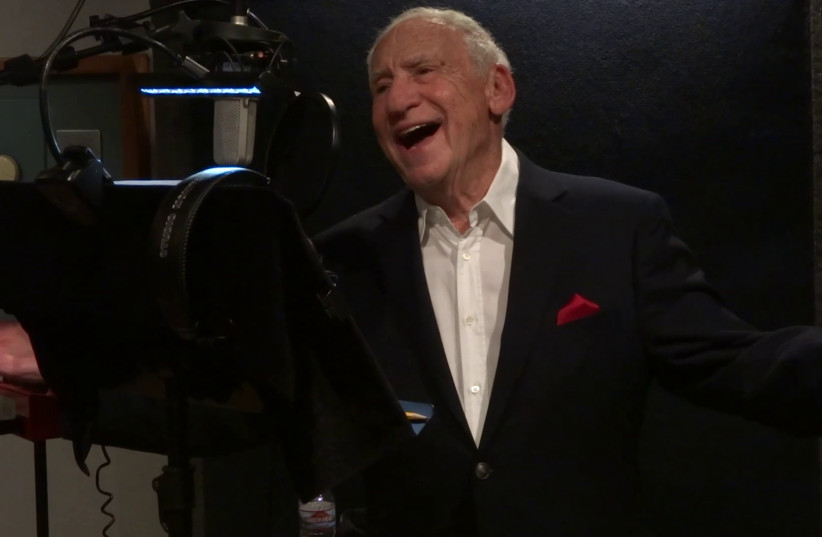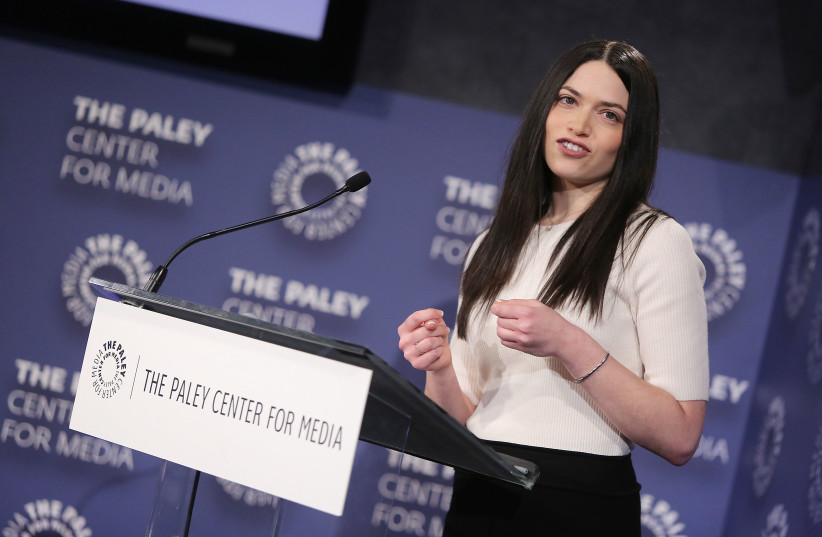The Automat, an engaging documentary that plays like a love letter to the once cutting-edge chain of mechanized eateries, is heading to the Miami Jewish Film Festival on January 23. It will open in theaters in New York and Los Angeles in February (for details of screenings, go to automatmovie.com), so its first-time director, Lisa Hurwitz, ought to be on top of the world.
After all, she got such celebrities as comedian Carl Reiner and Supreme Court Justice Ruth Bader Ginsburg, who were interviewed not long before their deaths, to reminisce about what the unique food franchise meant to them and to so many other New Yorkers.
Other interviewees include actor Elliott Gould, former US Secretary of State Colin Powell and former Starbucks CEO Howard Schultz. Mel Brooks also took part in the movie and the nonagenarian comedy king actually wrote a song about his love for the Automat, which was arranged and produced by Hummie Mann, and which Brooks belts out in the movie, showing off an impressive set of pipes.
Sample lyrics: “There was nothing like the coffee at the Automat/Nothing fancy or pretentious like today/You have to understand/They had no latte grande/No quizzical baristas in your way... And for just a shiny nickel/Your taste buds would be tickled.”
The documentary is a very accomplished debut film, a crowd-pleasing slice of nostalgia, featuring a comprehensive history of the phenomenal franchise, and analysis about why it caught on and stayed popular for so long. It has received rave reviews after being shown at film festivals and Cindy Adams, the legendary New York Post columnist, is beating the drum for the movie.

But when we spoke, Hurwitz was having a hard time celebrating its upcoming release because she was stuck in a hotel in Barcelona, where she had been since she tested positive for COVID-19 while on vacation in Spain. But she was upbeat and said she was feeling better and was happy to talk about the passion project she has been working on for several years.
For those who are not from New York, the city where there the Automat made its mark in a big way; or Philadelphia, where the first Automat opened its doors, here is a little background:
The Automat was a restaurant chain where the food and drinks (the coffee, as Brooks pointed out, was especially popular) were served from coin-operated vending machines, which struck those in the early 20th century as a triumph of technology and modernity and which were a great deal of fun to use.
The first Automat was opened by the Horn & Hardart company in Philadelphia in 1902, using technology developed in Berlin late in the 19th century. Horn & Hardart opened an Automat in New York in 1912 and it caught on quickly; at one time there were over 170 Automats and retail stores that sold food from the Automat.
All the restaurants featured gorgeous art deco-style décor and were the first fast-food emporia, but they offered a high-quality urban experience that brought people from all strata of society together. As Steve Stollman, an architectural dealer, says in the film, “It was the kitchen of New York.”
HURWITZ, A Los Angeles native now living in New York is far too young to have ever visited an actual Automat – the last Automat closed its doors in 1991. She became interested in the history of the Automat when she attended Evergreen State College in Olympia, Washington and enjoyed eating at the cafeteria there. But she didn’t always plan to make a movie about it.
“Originally, I was just curious and started visiting museums and archives,” she said. “But it got to the point where I was reaching out to the Horn and the Hardart families, to some of the employees and it was getting bigger. At the time I was a 35-millimeter projectionist in Olympia at the town’s 1920s movie palace, and I was interested in film and I was interested in the Automat and I thought, I might as well give it a shot.”

After I told her that I have vague memories of visiting the Automat on West 57th Street with my grandmother and great aunt when I was little, she said, “I envy you, I wish I could have gone there.”
As this informative movie demonstrates, the Automats fascinated both high-brows and low-brows. Comedian Jack Benny once hosted a black-tie party at an Automat. Moss Hart and Irving Berlin set their show, Face the Music, partly at the Automat, and Berlin penned the musical numbers, “Lunching at the Automat” and “Let’s Have Another Cup of Coffee.”
A number of movies had scenes set there, among them the Doris Day-Cary Grant movie, A Touch of Mink. The Automats became a kind of home-away-from-home for many aspiring show-biz types, as Brooks recalled, because it was so cheap. And there was that coffee, which, Brooks said “was hot and good and perfectly balanced and the aroma was beautiful and overpowering. And if I saved enough I could have two cups of coffee and push the silver dolphin’s tail,” which was the coffee spout.
But they were about more than just pleasant-smelling coffee. Bader Ginsburg – who preferred hot chocolate to coffee – spoke about how she would go to the Automat to eat and study when she was in school. A number of former patrons discussed how it was a place where women could eat out alone and be treated with dignity, at a time when it was not common for women to dine solo anywhere.
Powell and former Philadelphia Mayor Wilson Goode remembered the Automat as a place where people of color had no problem being served. Goode recalls that when many on-campus dining halls at the University of Pennsylvania would not serve African-American students, they always felt welcome at the Automat.
The Automat chain, which served thousands of pies an hour, also opened popular bakeries, which were advertised with the now-famous phrase, “Less work for mother.” The documentary delves into other aspects of the eateries, such as the famed “nickel-throwers” – clerks with an uncanny skill for handing patrons 20 nickels when they needed change for one dollar to use the machines.
Hurwitz celebrates the Automats, but does not shy away from some of the less appetizing aspects of their history, such as the fact that the owners tried to stop workers from unionizing and, as they were shutting down, some employees lost their pensions.
Eventually, as chains such as McDonald’s moved from the suburbs to the city, the Automats no longer offered unique fast food and also became a haven for derelicts. Eventually, the Automats were phased out and franchises such as Burger King were opened where the vending machines had once reigned supreme.
But the Automats influenced generations, among them Starbucks' executive chairman and former CEO, Howard Schultz, who grew up in Brooklyn and used to visit the Automat as a child. In the movie, he talks about how much the Automat fascinated and inspired him. He holds up a picture of an Automat machine that he keeps in his office, “as a constant reminder of the theater, the romance and the sense of discovery that existed. It was a great form of inspiration to me then and today.”
While she is now focusing on promoting the movie, Hurwitz said she had moved from the romance of the Automat to a romantic comedy for her next project, which she is now writing. But making The Automat will always be an important experience for her, no matter how many films she makes in the future.
“When I started on it, I didn’t realize how special it was to so many people and the larger cultural significance of what it meant in America... People were so eager to talk to me about it, it just took on momentum.”
